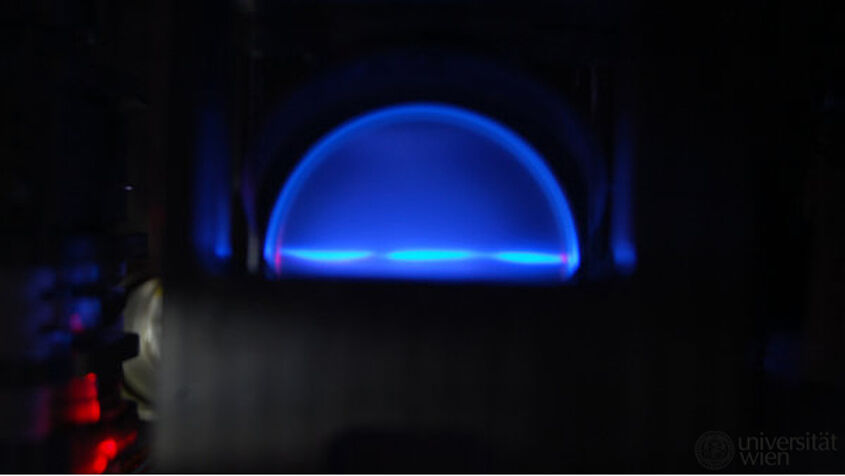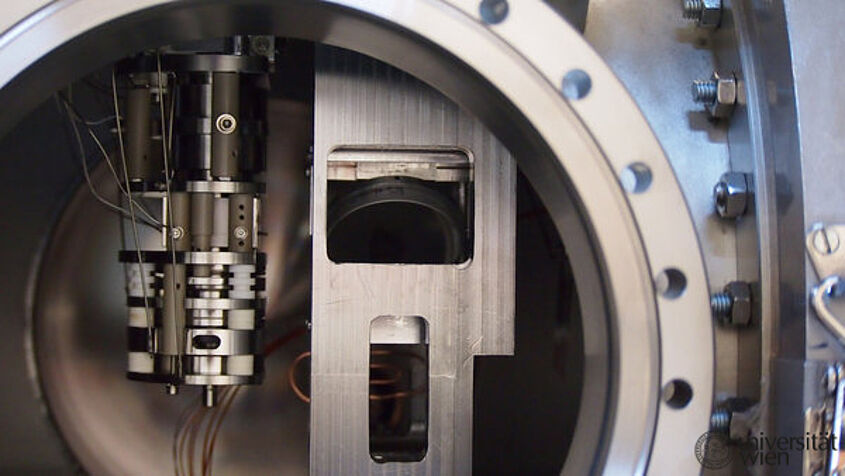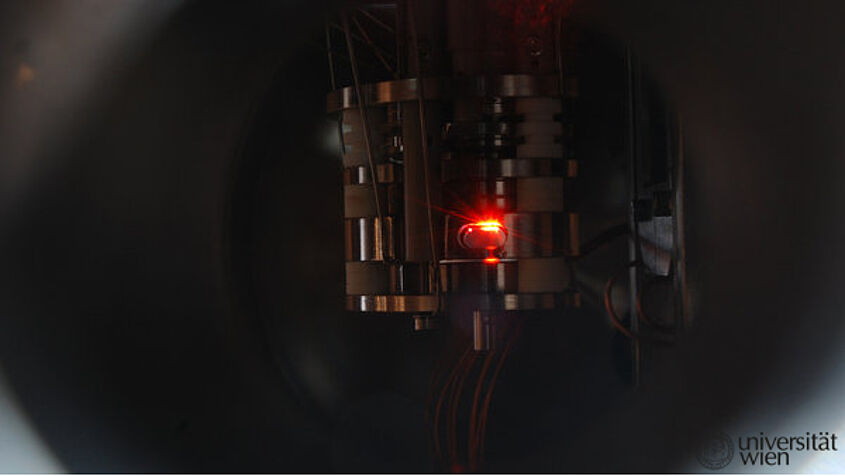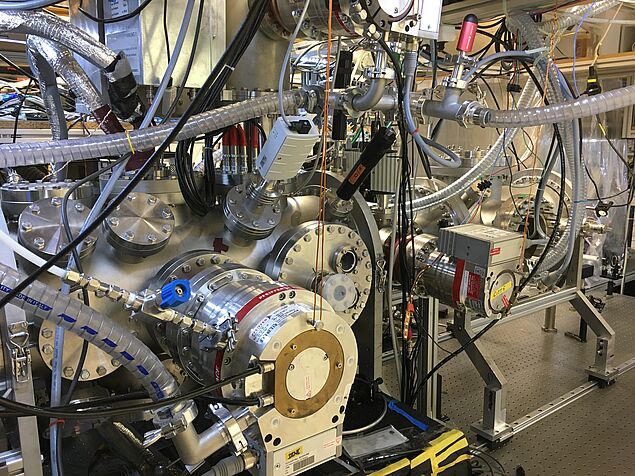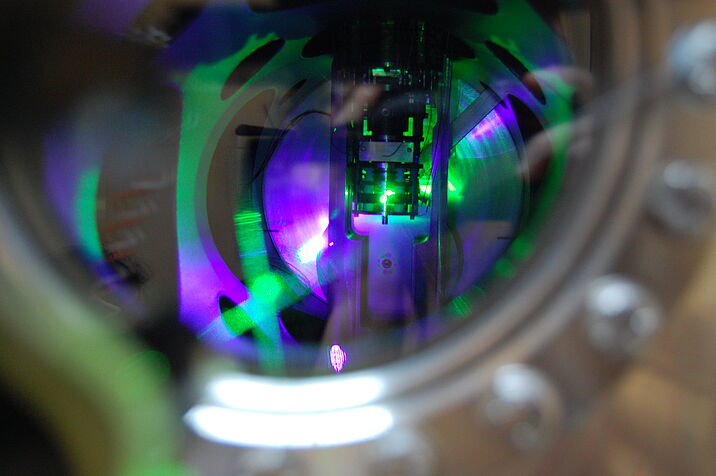OTIMA interferometry
Interferometry with vacuum ultraviolet (157 nm) photodepletion gratings was originally proposed for a cold pulsed metal cluster fountain [1], analyzed in the Wigner formalism for near-field Talbot-Lau interferometry in the time domain [2] and first realized with a horizontal scheme of pulsed clusters of organic molecules such as the Antrhacene decamer Ac10 [3].
OTIMA was originally conceived as an optical time-domain "ionizing" matter-wave interferometer, but any type of periodic single- or few-photon beam depletion mechanism can act as an amplitude modulating diffraction grating. This has been demonstrated for van der Waals bound clusters of hexafluorobenzene [4].
With recent advances in ultra-fast molecular desorption of even fragile biopolymers, it became even possible to demonstrate quantum interference of the the antibiotic polypeptide Gramicidin D. Gramicidin is a molecule composed of 15 amino acids, including 3 tryptophans, which undergo single-photon ionization under 157 nm irradiation [5].
- Elisabeth Reiger, Lucia Hackermüller, Martin Berninger, and Markus Arndt,
Exploration of gold nanoparticle beams for matter wave interferometry
Opt Commun 264 (2), 326-332 (2006). - Stefan Nimmrichter, Philipp Haslinger, Klaus Hornberger, and Markus Arndt,
Concept of an ionizing time-domain matter-wave interferometer,
New Journal of Physics 13 (7), 075002 (2011). - Philipp Haslinger, Nadine Dörre, Philipp Geyer, Jonas Rodewald, Stefan Nimmrichter, and Markus Arndt,
A universal matter-wave interferometer with optical ionization gratings in the time domain,
Nature Physics 9, 144–148 (2013). - Nadine Dörre, Jonas Rodewald, Philipp Geyer, Bernd von Issendorff, Philipp Haslinger, and Markus Arndt,
Photofragmentation Beam Splitters for Matter-Wave Interferometry
Phys. Rev. Lett. 113, 233001 (2014). - A. Shayeghi, P. Rieser, G. Richter, U. Sezer, J. H. Rodewald, P. Geyer, T. J. Martinez, and M. Arndt, Matter-wave interference of a native polypeptide
Nat. Communs. 11, 1447 (2020).

